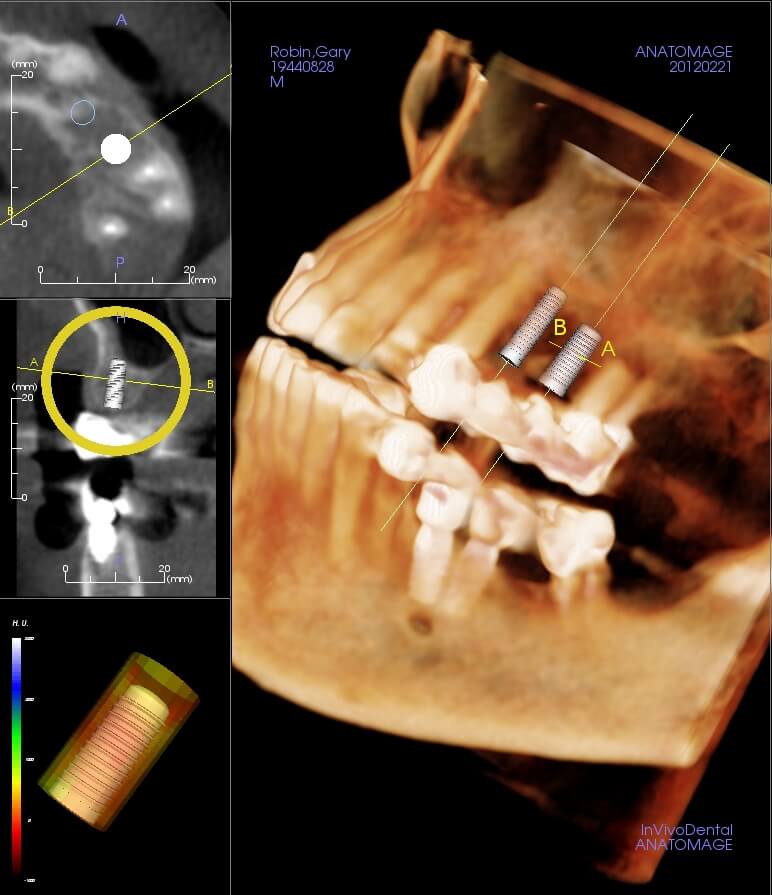
Adult Growth of the Dental Arch
Successful restorative dentistry now hinges on an understanding that physiological changes occur over a lifetime. It’s detrimental to treat the dynamic relationship between dental occlusion and adjacent craniofacial structures as static.
We are all generally familiar with the fact that there is a significant change in facial profile (convex to straight) between adolescence and adulthood. Jaw growth usually ends between 17 and 20-ish years old, but 3-dimensional craniofacial skeletal growth and remodeling does not cease after adolescence.
It’s lifelong growth even though it’s slow. As a result, we can’t consider adult patients morphologically stable. This is actually a relatively new concept that we’ve become aware of because of implant dentistry.
So what does this mean for restorations? First, we need more information.
Physiological Changes and Restorative Dentistry: A Quick Overview
These adult growth changes can be seen in both a decrease and increase in the dimensions of the craniofacial skeleton. There is an increase in maxillary and mandibular anterior dentoalveolar heights.
We should also pay attention to vertical growth of the maxilla, which continues after transverse and sagittal growth end. It has been suggested that reductions seen in arch width, depth, and perimeter may be due to interstitial wear and mesial drift. The latter occurs because of an occlusal force stemming from root angulation, mesial eruption force and the direction of occlusal contact during chewing. It’s integral to consider tooth movement because it compensates for wear while maintaining interproximal contacts.
There are different patterns of growth in short-faced and long-faced people. Short-faced individuals have greater transverse maxillary growth. As they mature, their anterior teeth tip forward and enable mesial drift. This process occurs more vertically in long-faced people. Short-faced individuals experience upward buccal movement of the teeth, while long-faced individuals experience lingual movement and continual tooth eruption that supports a normal interarch relationship.
What we now know from recent research is that eruption after the tooth has reached occlusal contact is a compensatory response to occlusal wear. Eruption creates vertical growth if there is no occlusal wear.
A comprehensive understanding of the complex interplay between all of these changes in the dental arch is essential to restorative dentistry.
How do you keep up to date on the latest dental research? We’d love to hear your tips in the comments!
Related Course
E3: Restorative Integration of Form & Function
DATE: October 5 2025 @ 8:00 am - October 9 2025 @ 2:30 pmLocation: The Pankey Institute
CE HOURS: 41
Dentist Tuition: $ 7400
Single Occupancy with Ensuite Private Bath (per night): $ 345
THIS COURSE IS SOLD OUT Understanding that “form follows function” is critical for knowing how to blend what looks good with what predictably functions well. E3 is the phase of…
Learn More>







The first issue is understanding at-risk patients so you can prevent the problem since treatment after the problem is not the best solution. You can see the entire article on the Pankey Virtual Institute or email me, rasolowdds@aol.com for the original article. Crossing the arch is not really at issue here as adjacent tooth eruption relative to the fixed position implant occurs at and away from midline sites. Crossing the arch with multiple splinted implant-implant or implant-tooth restoration could prevent eruption problems but incurs other restorative problems (one problem area affects many teeth) and it is much better to separate implant restorations into single or multiple small segment restorations.
Roger, so with this information, how do we decide when a patient is “old enough” to replace a missing tooth (say a maxillary lateral incisor) with an implant?
I was originally taught 18 for girls and 20 for boys. And now understand it to be more like 20 for girls and 22 for boys.
Also, how does the wearing of an occlusal splint effect or restrict some of this late vertical growth?